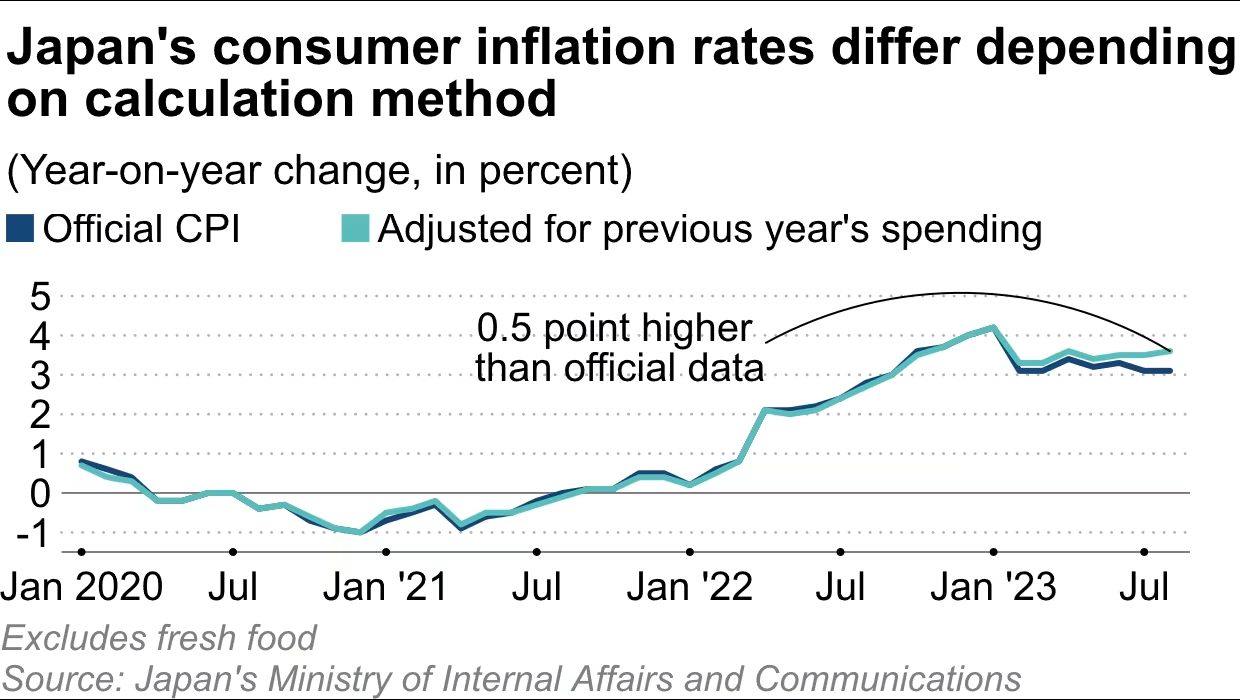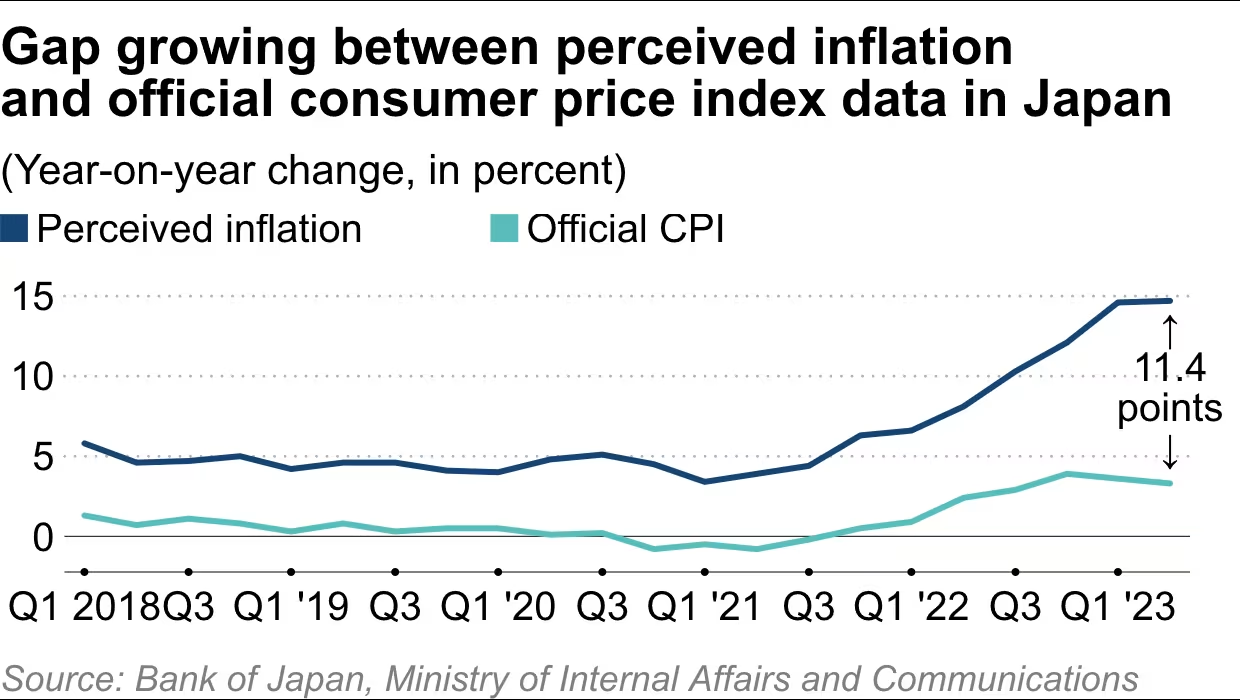Japan inflation soars as statistics don't fully reflect reality?
Japan's official inflation statistics do not fully reflect the actual situation of price increases because they are based on past consumption patterns, which makes it difficult for the government and businesses to assess the actual situation of the domestic economy.。
It has been reported that Japan's official inflation statistics do not fully reflect the actual situation of price increases because their calculations are based on past consumption patterns, which makes it difficult for the government and businesses to assess the actual situation of the domestic economy.。
Another calculation that reflects recent consumption trends suggests that Japan's consumer inflation rate in August was 0% higher than the official data..5%。In addition, a survey by the Bank of Japan (BOJ) shows that consumers feel that prices are rising much faster than the official copper data.。
In late August, Japanese Prime Minister Fumio Kishida broke through the national average retail price of gasoline at 185 yen per liter (about 1.$23), just two days after a record high, announced the expansion and extension of gasoline subsidies。
Announcing the move, Fumio Kishida said: "I will protect the living conditions of the people and the business operations of SMEs.。"
Japan's average gasoline price per liter hovers between 120-130 yen in 2020 due to weak demand during the new crown epidemic (COVID-19)。Since then, gasoline prices have soared due to higher crude oil prices and the war in Ukraine.。The weaker yen has also pushed up oil prices, with more confidence that the statistics do not fully reflect the large price swings。
The Consumer Price Index (CPI), published by the Ministry of Internal Affairs and Communications of Japan, is a weighted average of the prices of goods and services consumed by households (the weights are revised every five years, the same as in 2020).。As a result, the index is out of touch with major changes such as soaring energy prices and will remain unchanged until the next weighting revision.。

As of 2020, the total weight of the country's prices for gasoline, electricity and other categories is 712, while the base for total consumption is 10,000.。But that number climbed to 803 in 2022, thanks to a sharp rise in energy prices.。With the gradual recovery of the post-epidemic economy, consumer demand for dining out, accommodation and other types of items is picking up rapidly。(The 2020 base is averaged with 2019 to offset the impact of the outbreak.。)
Based on the 2020 base, Japan's core inflation rate in August (excluding fresh food) was 3.1%。And based on the calculation of the annual update weights, the number amounts to 3.6%。
Not only that, but there is a clear discrepancy between official price data and consumer perceptions because the price of food and other daily necessities has risen sharply in the past year or two.。
In addition, there is a clear discrepancy between official statistics and consumer perceptions, as the price of food and other daily necessities has risen sharply in the past year or two.。A survey by the Bank of Japan shows that the perceived inflation rate in June (all categories) was 14.7%, more than 11% higher than the overall CPI data。

In the process of calculating the 2020 CPI base, there have been calls to use the ring index, which is updated annually, as the main measure of CPI.。However, the Ministry of General Affairs only considers them as reference data。It is understood that because the ring index can reflect changes in consumption patterns at any time, the United Kingdom, France and many other countries use the index, although its calculation is more difficult and there are some differences.。
For economic policymakers and business leaders, an accurate assessment of underlying inflation is crucial, as prices determine the level of wage growth, which in turn is key to economic growth.。However, assessing and interpreting price changes is not easy, especially after shocks such as unprecedented epidemics and wars。
When asked to evaluate the different methods of calculation, an official from the Ministry of General Affairs said, "The question is not about which of the two methods is better or worse.。A Bank of Japan official said: "Since both are biased, you need to pay attention to both data."。"
·Original
Disclaimer: The views in this article are from the original Creator and do not represent the views or position of Hawk Insight. The content of the article is for reference, communication and learning only, and does not constitute investment advice. If it involves copyright issues, please contact us for deletion.